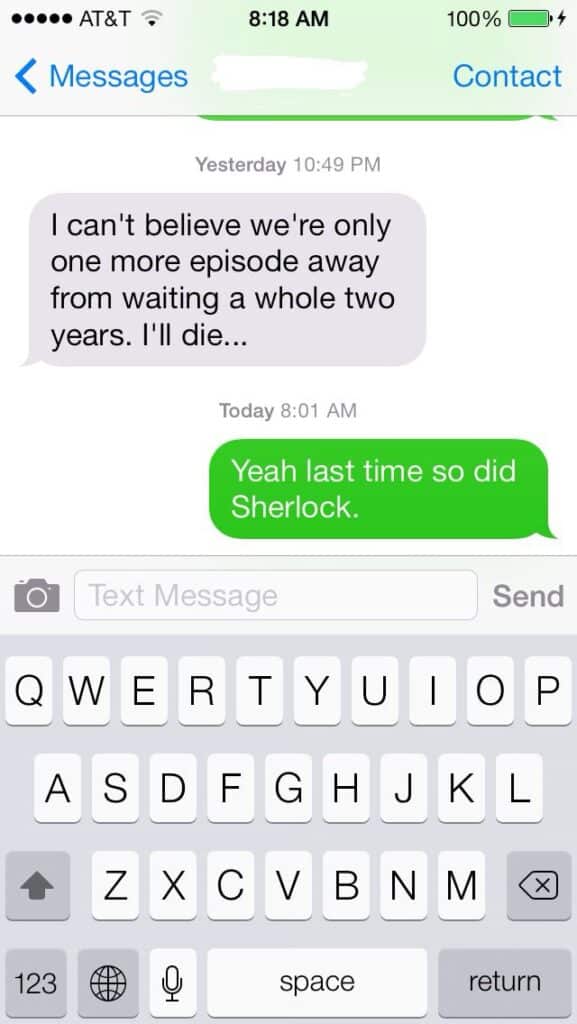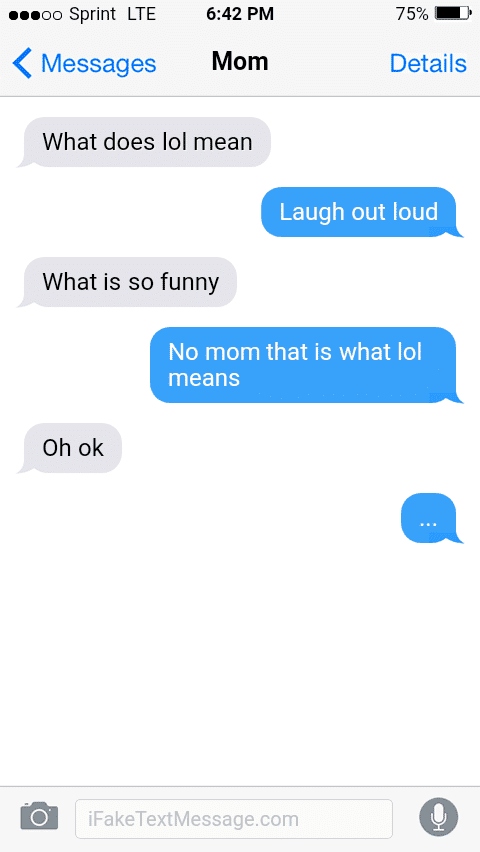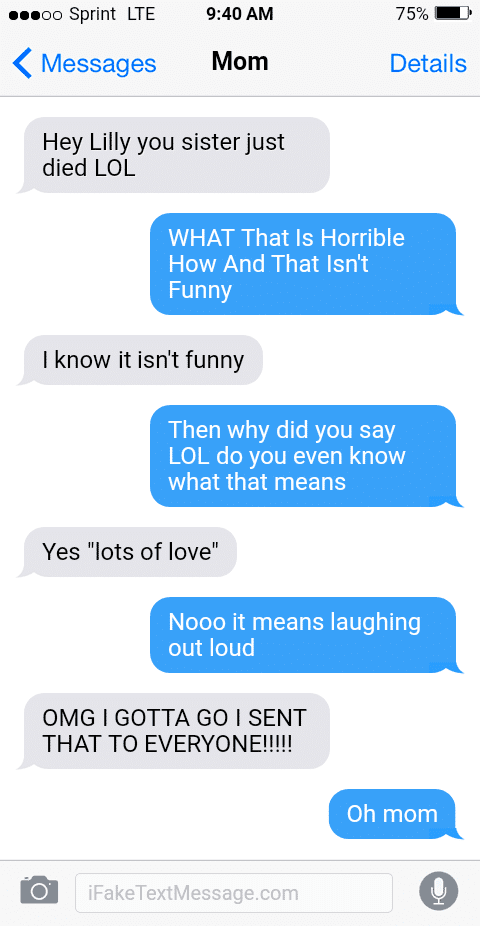Fake LOLs are digital social lubricants that mask vulnerability while signaling continued engagement in conversation. Research from MIT Media Lab shows the average person sends 8-12 insincere “lols” daily, with 73% serving as emotional placeholders rather than indicators of genuine amusement. Discover the 4 hidden meanings behind these automatic responses and what their text is really trying to tell you.
We’ve all done it. Sent a robotic, automatic “lol” without even a hint of a smile. And we’ve definitely received one in return, leaving us wondering: Wait… was that actually funny to them? Was it funny to me? Fake LOLs are ev-ery-where. But what do they really mean? And how can you tell when someone’s just being polite versus genuinely amused?
What Is a Fake LOL?
Technically, “LOL” means laughing out loud. But let’s be real because most of the time, it’s more of a social reflex than an actual reaction. A fake LOL is when someone drops an “lol” (or “haha,” “lmao,” etc.) without so much as a chuckle. Linguists call this a phatic expression which is a phrase used to keep conversation flowing rather than to convey real meaning. Think of it like small talk, but for texting.



Why Do We Fake-LOL?
Without tone of voice or facial expressions, communication can be come a minefield. Here we go with the fake LOL… When someone brings it up its used like the period at the end of a sentence:
- Soften a message (“No worries lol”)
- Defuse tension (“You’re crazy lol”)
- Flirt (“Oh, so you’re funny now lol”)
- Mask annoyance (“Sure, ignore me lol”)
A study found that less than 30% of LOLs were tied to actual laughter. The rest? Pure social strategy. Can you believe people actually researched this?!
The 5 Types of Fake LOLs (and What They Really Mean)
Not all fake LOLs are created equal. Some smooth over awkwardness, others mask irritation while a few are even strategic. Here’s how to decode them, with why they’re used and how to spot the difference:
1. The Polite LOL
- What it is: The conversational equivalent of a nod. It doesn’t mean they’re laughing—it means they’re acknowledging you.
- Why people use it: To avoid seeming cold or disengaged, especially when they don’t have a strong reaction.
- Example: “Haha yeah, totally lol.”
- How to spot it: The message is neutral or factual (nothing funny was said), or the “lol” feels tacked on.
2. The Defensive LOL
- What it is: A verbal airbag—deployed to soften a comment that might land awkwardly.
- Why people use it: Fear of confrontation. The “lol” acts as a safety net in case their tone is misinterpreted.
- Example: “I was just kidding lol.”
- How to spot it: The comment could potentially offend or be taken seriously without the “lol.”
3. The Flirty LOL
- What it is: Less about humor, more about keeping the vibe playful and inviting.
- Why people use it: It’s a low-stakes way to signal interest without being too direct.
- Example: “You’re such a dork lol.”
- How to spot it: The message is teasing or lightly mocking, but the “lol” makes it feel warm, not mean.
4. The Deadpan LOL
- What it is: Sarcasm in text form. The “lol” is a wink to show they’re not actually laughing.
- Why people use it: To underscore irony or absurdity when tone is hard to convey.
- Example: “Wow, groundbreaking lol.”
- How to spot it: The message is blatantly un-funny (or even cynical), making the “lol” glaringly out of place.
5. The Passive-Aggressive LOL
- What it is: A smirk over gritted teeth. The “lol” disguises frustration as casualness.
- Why people use it: To vent annoyance while maintaining plausible deniability (“I wasn’t mad! It was a joke!”).
- Example: “Guess I’ll do it myself lol.”
- How to spot it: The message has a clear edge, and the “lol” feels like an afterthought to downplay it.
How to Spot a Fake LOL
Spotting inauthentic laughter isn’t about cynicism – it’s about understanding the subtle cues that reveal what someone really means. Here’s your forensic toolkit:
1. The “No Joke” Test
- What to look for: A message where humor was neither intended nor possible
- Why it matters: Genuine laughter needs something funny to react to. When someone “lols” at “The meeting’s at 3pm,” that’s social padding, not amusement.
- Pro tip: Ask yourself: “Would this make me laugh out loud in person?” If not, it’s probably a fake LOL.
2. The Over-LOLing Phenomenon
- What to look for: Multiple LOLs (“lololol”), excessive hahas, or laughter in every response
- Why it matters: This often indicates nervous energy or conversational anxiety rather than genuine mirth. It’s the digital equivalent of nervous laughter.
- Pro tip: Notice if the LOLs increase during awkward topics – this is a telltale discomfort signal.
3. Punctuation Tells the Truth
- What to look for:
- “lol.” (with period) = usually sarcastic or resigned
- “lol!” = potentially genuine enthusiasm
- “lol” (standalone) = often filler
- Why it matters: Punctuation carries emotional weight in text. A period adds finality that contradicts actual laughter.
- Pro tip: Compare their LOL punctuation patterns across different moods.
4. The Response Time Factor
- What to look for: Instant “lol” vs delayed response
- Why it matters: An immediate “lol” is more likely reflexive, while delayed responses with laughter might indicate actual amusement.
- Pro tip: Combine this with other cues – a fast “lol” to a serious message is almost certainly fake.
5. The Context Disconnect
- What to look for: LOLs that don’t match the conversation’s emotional temperature
- Why it matters: When laughter appears in serious or tense exchanges, it’s often serving as a social buffer.
- Pro tip: Watch for LOLs that seem to soften criticism or difficult messages.
Why Does This Matter?
Understanding these cues helps you:
- Avoid misreading someone’s tone
- Respond more appropriately to what they actually mean
- Become more mindful of your own digital laughter habits
Remember: Fake LOLs aren’t necessarily bad. Think of them like social lubrication. But knowing how to spot them gives you a clearer window into the real conversation happening beneath the surface.
Should You Care?
Not every fake LOL needs a forensics work but if you notice a pattern, it might reveal:
- Is this person avoiding something?
- Are they uncomfortable?
- Am I using LOLs as a shield?
And if you’re the one tossing out fake LOLs, ask yourself: Why? Habit? People-pleasing? Sometimes, dropping the “lol” can make your texts clearer and more honest.
The Bottom Line
Fake LOLs aren’t about deception because they’re social glue. They smooth over awkwardness, keep conversations light, and help us navigate the weird, word-only world of texting. So next time you get an “lol,” don’t stress about it. Maybe ask yourself: When was the last time I actually laughed out loud at a text?










